Walking along the ancient baths in Rome
If you think you know well that this bath, then most likely, you're wrong. We go over the grandiose ruins of Roman baths, or term, with a camera, to show you the grandeur of these seemingly simple structures.
Roman baths - is not just a bath, and at its core is more that a kind of recreational and entertainment centers. Not all, of course, but those were great. All in the city, as they say, there were several hundred large and small term. We will tell you about the two - the famous Baths of Caracalla and Diocletian.
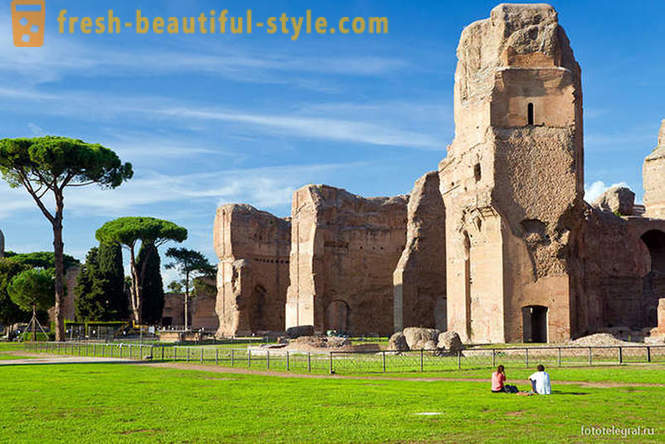
Termy Karakally - it terms of the emperor Caracalla, officially referred to as Antonianovymi. Construction began in 212 BC. e. and it was completed in the year 217 after the death of the emperor. Yard term Karakally has a size of 400 to 400 m, the central complex - 150 200 m.
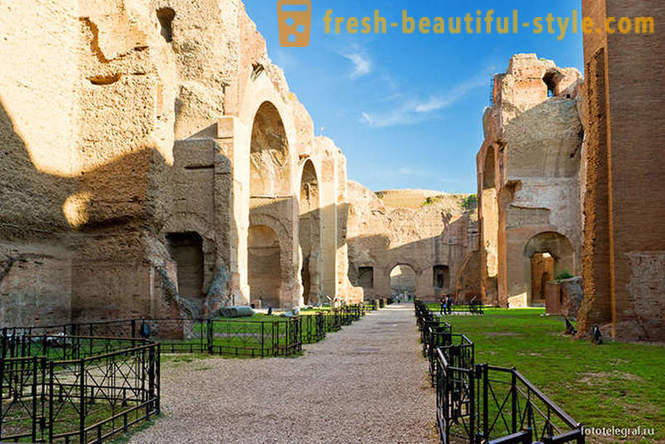
Already in the V century. n. e. Baths of Caracalla were considered one of the wonders of Rome. They occupy an area of 11 hectares. The main building, "bath body" lying in the park, which was surrounded by a solid line in different rooms. The bronze bindings huge semicircular windows of the main hall of the thin plate of translucent stone ivory have been inserted. Because of this, the hall was illuminated evenly golden light. The walls of polished marble as if dissolved in height, where soaring unprecedented magnitude vault.
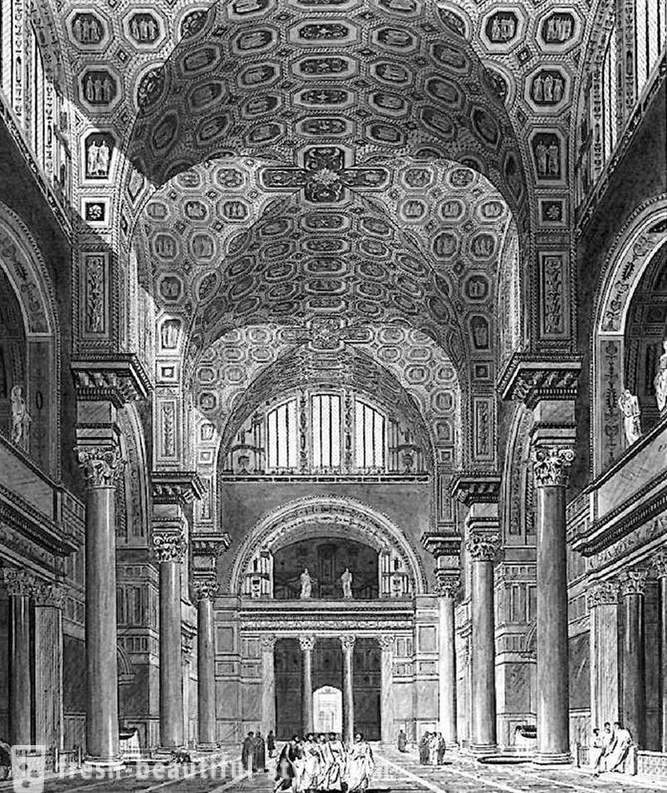
Graphic reconstruction of one part of the Baths of Caracalla.
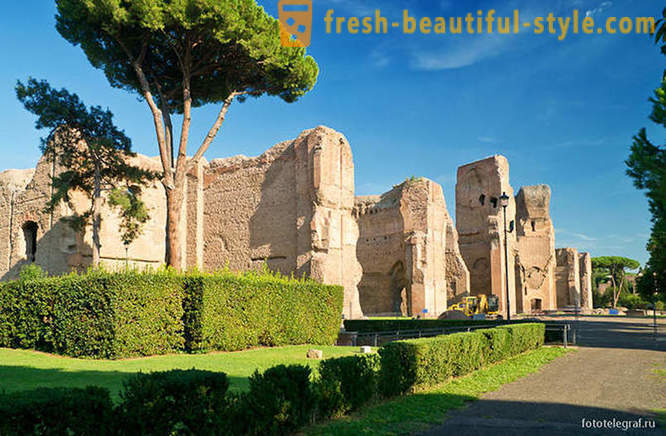
The first baths in Rome built the famous statesman Agrippa in the 1st century BC. e., bequeathed them to free use of the Roman population. Then build steel baths emperor - Nero, Titus, et al Traian Photo: ruins term Karakally..
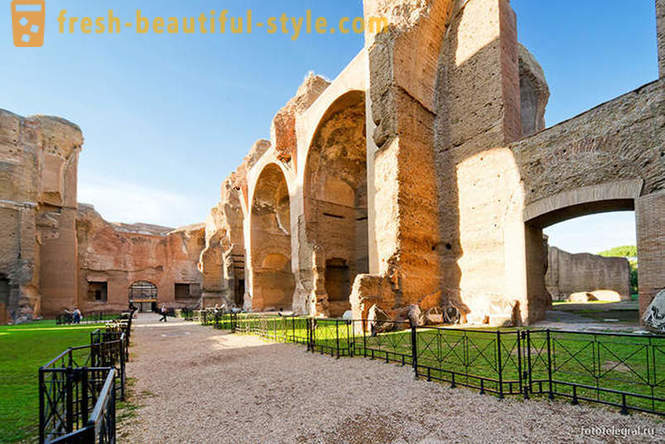
Inside the imperial baths were made of marble and decorated with mosaics, sculptures and marble columns, windows and doors were made of bronze. Outside baths were covered with marble slabs. The basis of the term was a set of special facilities. Clothes left in the locker room (apodyterium), then the visitor can do sports or lubricate body oils. Bath "program" started with a swim in the cold water in the frigidarium, then in lukewarm water in the tepidarium, and then in the caldarium, with warm water. In the photo: the ruins of the Baths of Caracalla.

The Roman architects have developed an efficient central heating system with heated floors and walls - hypocaust (hypocaustum). In the baths through a furnace (praefurnium) were heated water and air are then circulated under the floor and in the walls of the cavities. In the photo: the ruins of the Baths of Caracalla.
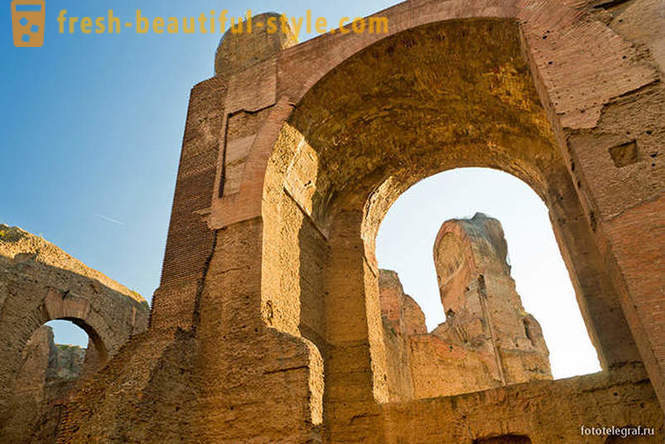
This is necessary not only wash away dirt, resting here. Of particular importance for the baths had poor. No wonder one of the modern scientists named the best terms gift which emperors did the Roman population. Visitors are here and the club and the stadium, and a garden of rest, and the House of Culture. Each could choose what was his taste: some, vymyvshis, sat down to chat with friends, going to look at the fight and gymnastic exercises and do them themselves; others wandered through the park, admiring the statues, sat up in the library. In the photo: the ruins of the Baths of Caracalla.

The outside of the Terme di Caracalla, looking at the street. Here, near the entrance to the territory of the monument. The ticket costs about 5 euros.

Before the main complex is a park, also part of the term. Here, even, like, there was a small stadium. Tourists on the territory of the term is very small, so the surf here is very nice.
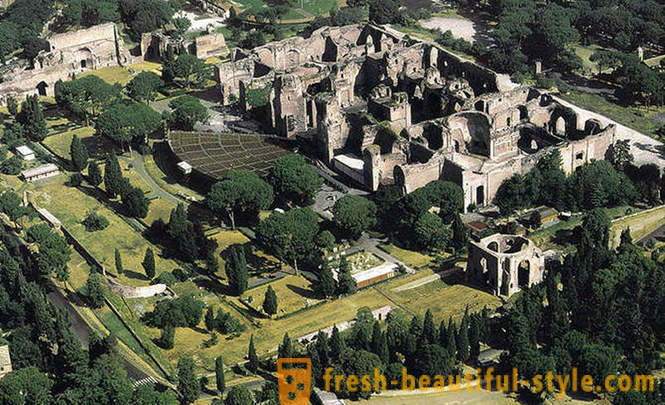
The modern view of the Baths of Caracalla. Even in ruins, they shake in its scale.
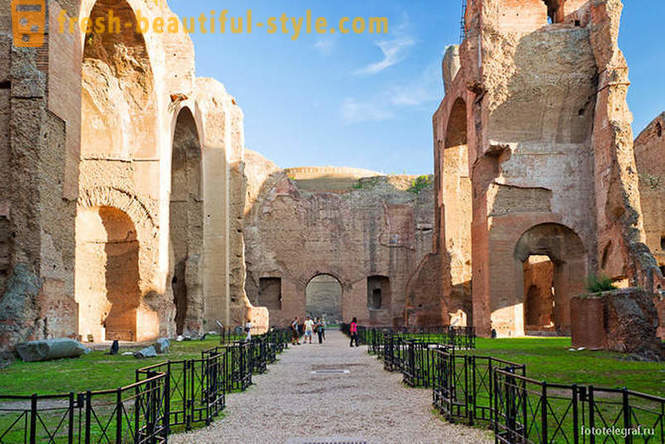
The emperors not only aspired to the artistic decoration of their term, not only veneered with marble walls, floors covered with mosaics and placed great columns: they are systematically collected works of art here. At Caracalla were once Farnese Bull, statues Flora and Hercules torso Apollo Belvedere (excluding many other less significant statues).
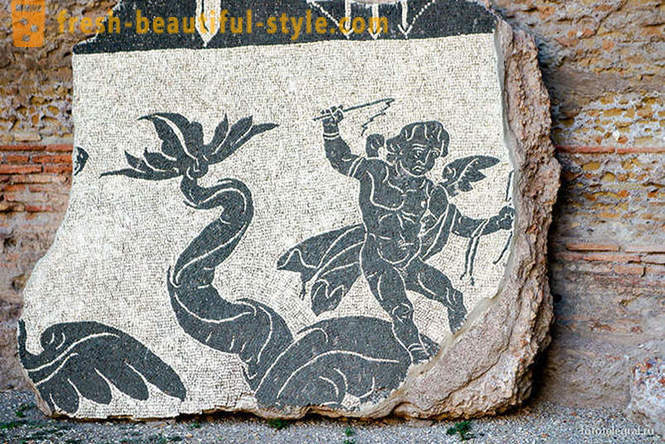
Now in the baths can be seen here are the remains of mosaic paintings that adorned the walls and floor.

The remains of the Baths of Caracalla facilities with a mosaic floor.
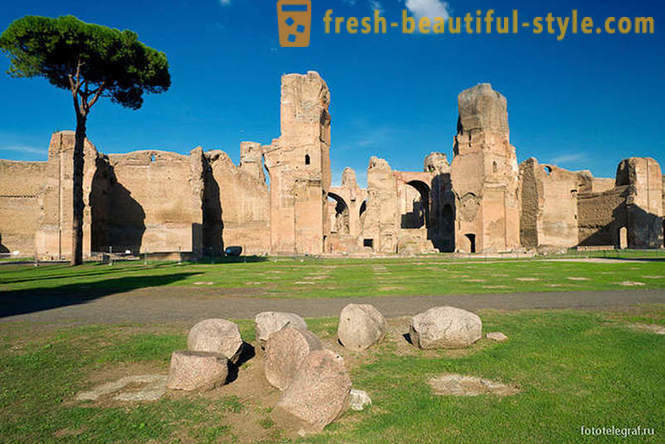
The decline of the Baths of Caracalla came in late antiquity, allegedly after the destruction of the barbarians of the aqueduct that supplied water baths. Of course, to believe that people do not want to restore the water supply, just deciding no longer to wash, it is impossible. Most likely, the real reason for the desolation of these and other term was the reign of Christian ideology, which did not fit the bath.
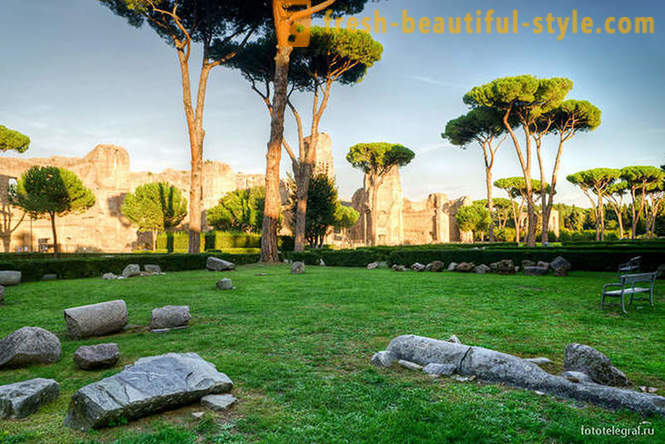
Gradually, the Caracalla Baths lost its shape - Romans pilfering them literally to pieces. For centuries, the majestic building served as a source of building materials.
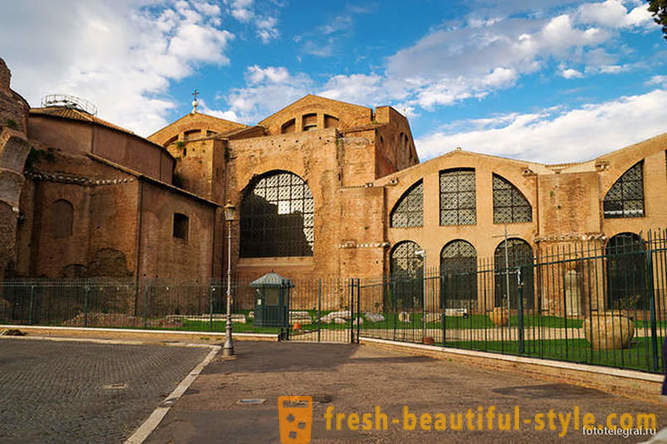
And this Diocletian Baths. Or rather, what's left of them.

The construction of the term began in the year 298. In 305, they were consecrated in honor of Diocletian. Bani area of over 13 hectares were built on a plan similar to the Baths of Caracalla. Facilities can accommodate up to 3 thousand people, the gardens were adorned with fountains and pavilions, the territory also has a library, meeting rooms and sports exercises.
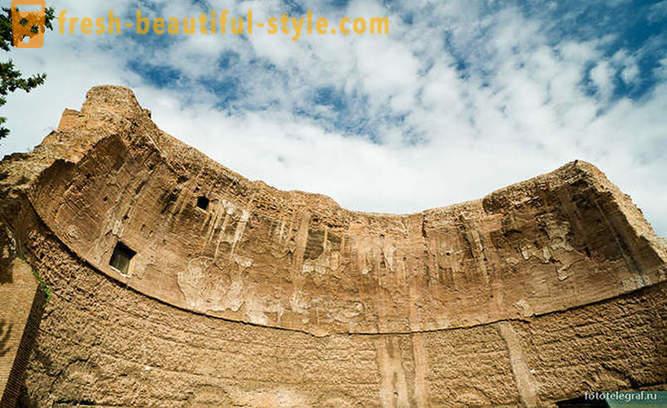
Like the Baths of Caracalla, the Baths of Diocletian were built of brick and concrete.
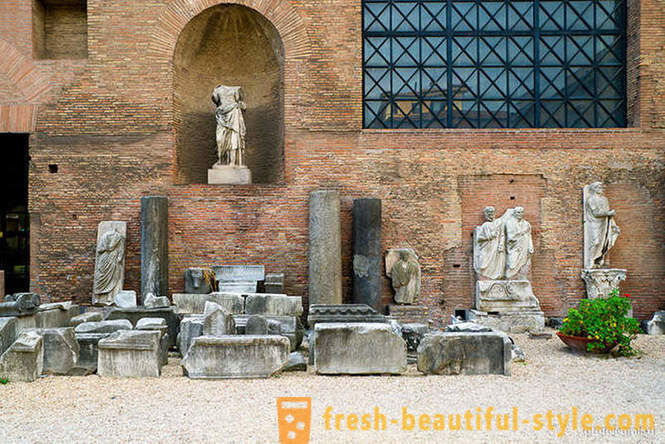
In our time in the Baths of Diocletian is the National Roman Museum, where among other things assembled one of the largest collection of ancient sculpture.
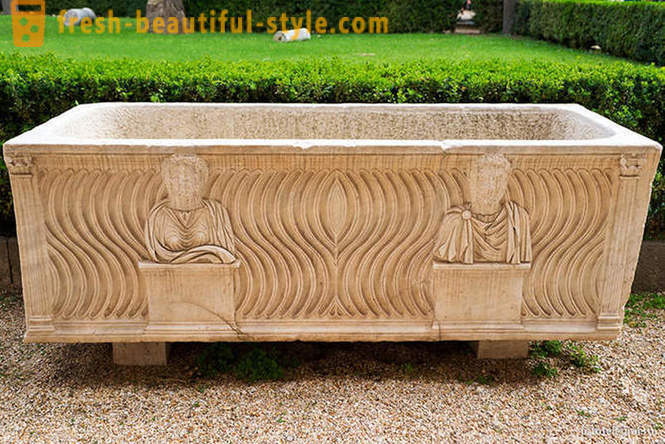
An ancient sarcophagus in the territory of the Diocletian. Face images of people apparently shot down. Whom they prevented?
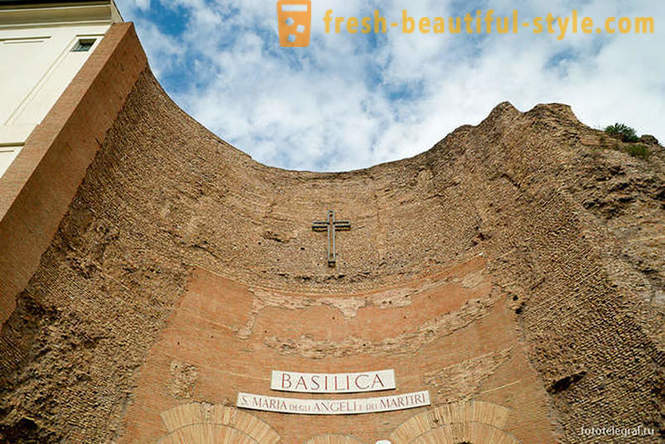
On the territory of the former Diocletian are also Christian churches. This church - Santa Maria degli Angeli e dei Martiri - is a converted part of a term. Its facade - a wall caldarium (hot bath room).
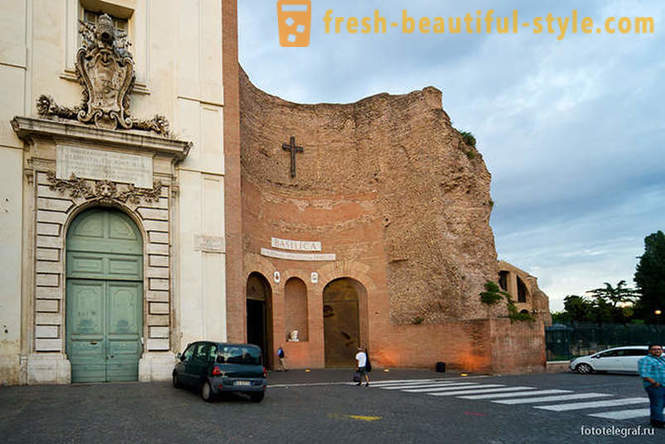
It is believed that the construction of the church was carried out under the project Michelangelo and completed in 1566 inside the Santa Maria degli Angeli e dei Martiri decorated with antique columns, classical ornaments, sculptures and paintings, including works by French artists XVII-XVIII centuries.
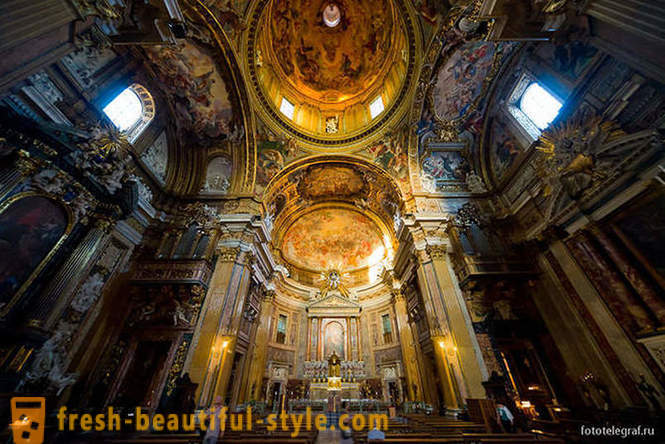
If we are talking about the Roman church, the next time we go through the most beautiful and famous of them.













































